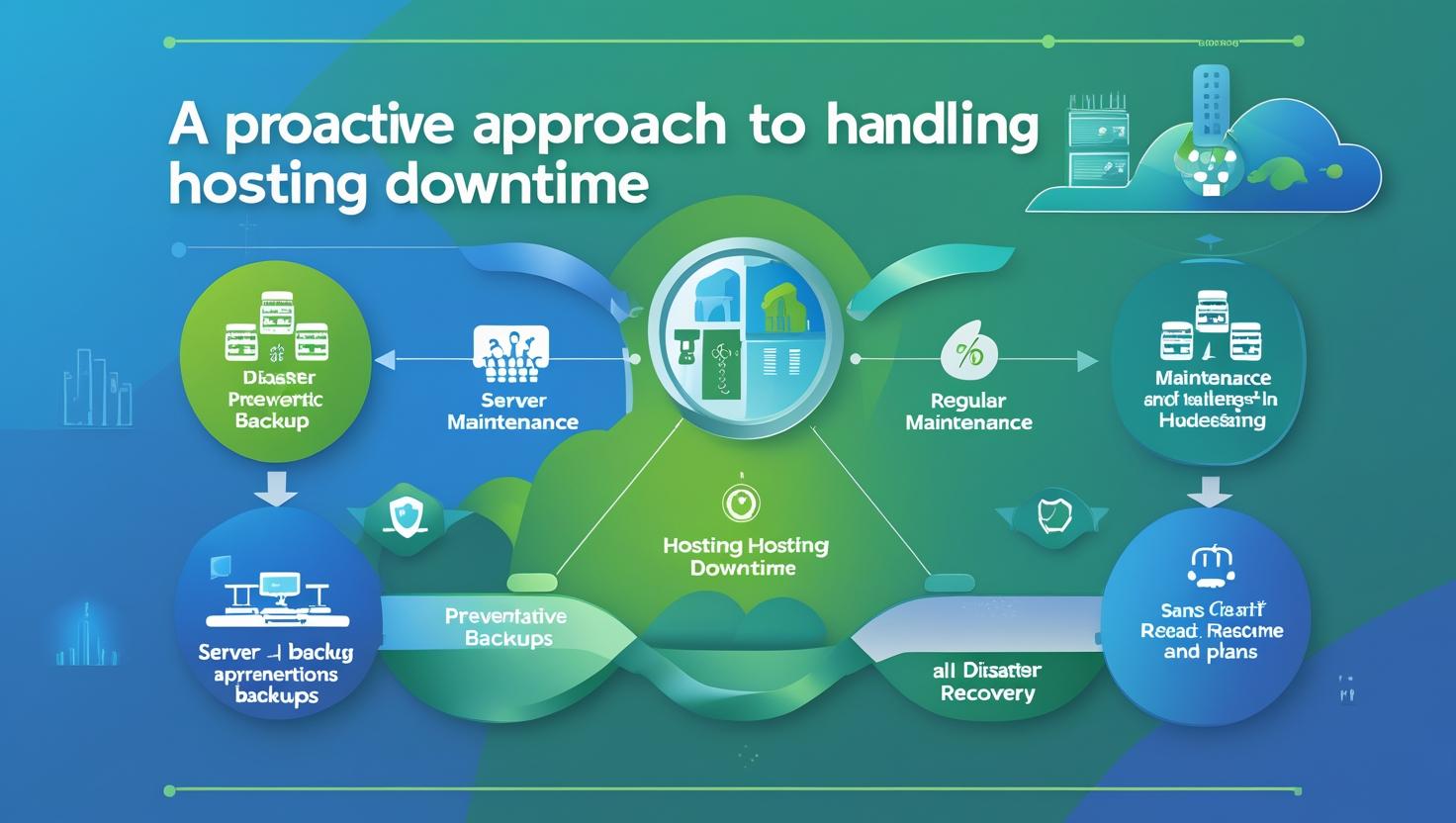
How to Handle Hosting Downtime Proactively
🚨 How to Handle Hosting Downtime Proactively
Website downtime is every business owner’s nightmare. Whether you’re running an eCommerce store, blog, or SaaS platform — even a few minutes of unplanned downtime can lead to lost revenue, poor user experience, SEO penalties, and damaged brand reputation.
But here’s the good news: You can minimize the impact of downtime — or avoid it entirely — with proactive planning.
In this guide, we’ll walk you through how to prepare, detect, and recover from hosting downtime like a pro.
⏱️ What Is Hosting Downtime?
Downtime refers to any period when your website is offline or inaccessible to users. It can be caused by:
-
Server maintenance or overload
-
Hardware failure
-
DNS configuration errors
-
DDoS or cyberattacks
-
Software conflicts or updates
-
Hosting provider issues
Even the best hosting providers might occasionally experience unexpected issues. That’s why proactive management is key.
✅ 1. Monitor Your Website 24/7
You can’t fix what you don’t know is broken. That’s why real-time monitoring tools are the first line of defense against downtime.
Top Tools:
-
UptimeRobot
-
Pingdom
-
StatusCake
-
Site24x7
-
New Relic (for advanced diagnostics)
What they do:
-
Ping your site every 1–5 minutes
-
Alert you via email, SMS, or app when downtime occurs
-
Track uptime statistics over time
HiveRift Tip: Many HiveRift plans come with built-in uptime monitoring dashboards and notifications.
✅ 2. Choose a Reliable Hosting Provider
Not all hosting providers are created equal. If your current host experiences frequent outages or slow customer response, it’s time to upgrade.
Look for hosts that offer:
-
99.9% or higher uptime SLA
-
Cloud-based infrastructure with failover
-
24/7 support with live chat and ticket system
-
Data center redundancy and server health checks
-
Transparent incident reporting
HiveRift offers:
-
Uptime SLA of 99.99%
-
Geo-redundant cloud hosting
-
Tier-1 data centers and daily health checks
✅ 3. Set Up Automated Backups
Downtime from site corruption, hacks, or file loss can be devastating if you don’t have clean backups. With automated backups, you can restore your site quickly with minimal disruption.
Best Practices:
-
Daily (or hourly) automated backups
-
Offsite/cloud storage (not just on the server)
-
Easy one-click restore options
-
Test restores regularly
Recommended Backup Tools:
-
UpdraftPlus (WordPress)
-
JetBackup (cPanel)
-
BlogVault
-
CodeGuard
HiveRift Bonus: Daily backups are included with all plans, with instant rollback options.
✅ 4. Use a Content Delivery Network (CDN)
A CDN caches your site’s content across multiple servers globally, so even if your main server goes down, users can still access cached versions of your website.
Benefits:
-
Reduced latency and faster page load times
-
Keeps static content live during server failures
-
Adds DDoS protection and threat mitigation
Popular CDNs:
-
Cloudflare
-
StackPath
-
Bunny.net
-
Akamai
HiveRift Integration: Free Cloudflare CDN with automatic failover for select plans.
✅ 5. Enable Failover & Load Balancing
Failover systems automatically switch your traffic to a backup server if the main one fails. Load balancing distributes incoming traffic across multiple servers to prevent overloads.
Use Cases:
-
High-traffic websites
-
eCommerce stores
-
Web apps with global users
How to implement:
-
Use cloud hosting platforms with failover architecture
-
Deploy multiple nodes (multi-region hosting)
-
Set up DNS-level routing via providers like AWS Route 53 or Cloudflare Load Balancer
✅ 6. Prepare a Website Downtime Response Plan
Just like a fire drill, your team needs to know what to do when the site goes down.
Your downtime response plan should include:
-
Who monitors and gets alerts
-
Who contacts the hosting provider
-
What communication to send users
-
Which steps to initiate recovery
-
How to escalate severe outages
Pro Tip: Create a shared Google Doc or internal knowledge base with downtime checklists and contact lists.
✅ 7. Create a Custom Downtime Page
Instead of showing a generic “Site Not Available” error, use a custom maintenance page that:
-
Apologizes for the issue
-
Assures users that you’re working on it
-
Provides a timeline or support email
-
Includes links to social media or help docs
This builds trust and keeps users informed.
📉 What Are the Costs of Not Being Proactive?
If you don’t plan for downtime, the results can be painful:
-
Revenue loss: Especially for eCommerce and subscription-based services
-
User frustration: Leading to churn or bad reviews
-
Search engine penalties: If bots can’t reach your site repeatedly
-
Brand damage: Users lose trust in unreliable websites
-
Data loss: In extreme cases without backups
📈 Be Proactive, Not Reactive
Website downtime is inevitable — but disruption isn’t. When you prepare in advance, monitor performance, and choose the right infrastructure, downtime becomes a minor hiccup rather than a catastrophic failure.
🔧 HiveRift Makes Downtime Management Easy
With HiveRift’s proactive hosting solutions, you get:
-
Uptime monitoring + alerts
-
Built-in firewall + security checks
-
Cloud-based infrastructure with CDN
-
1-click backups and restores
-
24/7 expert support — real humans, not bots
Stay online. Stay protected. Choose hosting that’s always ready.
👉Explore HiveRift Hosting Plans Now